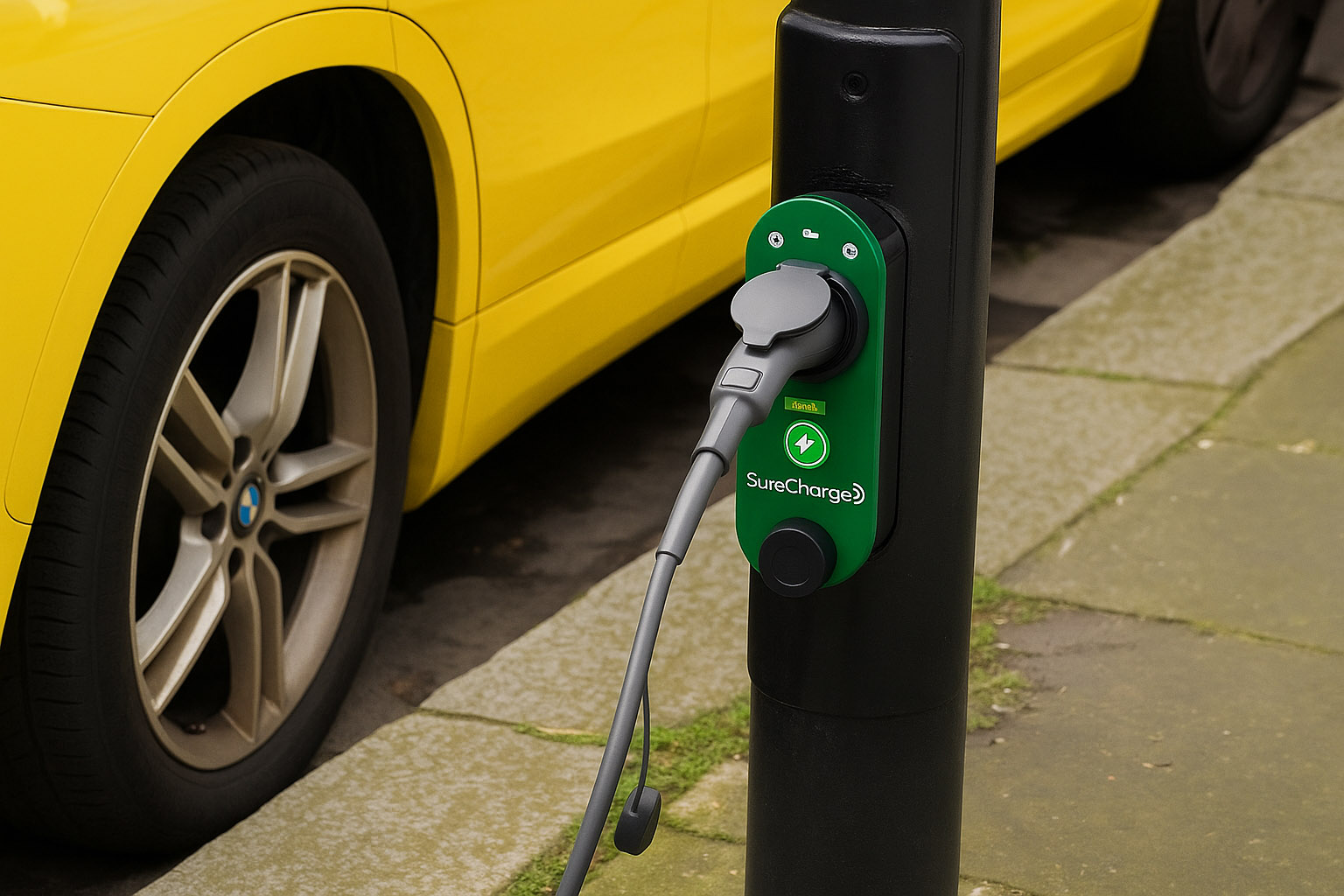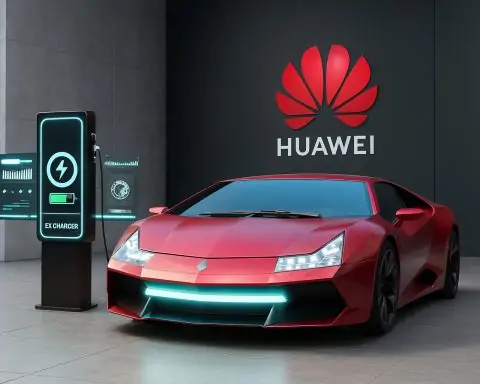- What happened: A Penn State research team built and field‑tested a scalable framework for turning ordinary streetlights into Level 2 EV chargers, then validated it with 23 retrofits in Kansas City, Missouri. Penn State
- Why it matters: The approach tackles the “no driveway, no charger” problem for renters and residents of multi‑unit buildings by using infrastructure that already exists on the curb. Penn State
- How it works: Cities use a three‑part model—demand, feasibility, and community benefits—to decide where streetlight chargers make the most sense. The team trained AI demand models on land use, charger density, points of interest, and traffic data. Penn State
- Performance: In the pilot, streetlight chargers delivered “significantly faster” charging speeds than conventional public stations and proved more time‑ and cost‑effective to deploy overall, with lower environmental impacts. Penn State
- Hardware details: Kansas City’s units used ChargePoint CT4013 single‑port Level 2 stations running on 208/240V, 40A service—about 25 miles of range per hour—mounted directly to poles. Metropolitan Energy Center
- Who’s involved: Funded by the U.S. Department of Energy, the work partnered Penn State, Kansas City, Metropolitan Energy Center (MEC), local utilities (operator Evergy), and NREL; the peer‑reviewed results appear in the ASCE Journal of Urban Planning and Development. ASCE Library
- Timeline & scope: Missouri’s utility regulator approved up to 50 locations in January 2022; 23 were installed January–April 2023 and monitored for one year. Metropolitan Energy Center
- Costs & reality check: Installation costs in the pilot ranged from ~$13,000–$45,000 per site (driven by required electrical upgrades). Even so, avoiding trenching and long conduit runs is a major reason the streetlight approach can cut total time and complexity compared with many curbside builds. Metropolitan Energy Center
The story: How Penn State turned a city’s streetlights into an equitable EV charging network
The problem
Public charging often clusters at highway fast‑charge hubs and commercial lots, while millions of urban drivers can’t plug in at home. That inequity slows EV adoption and keeps benefits—cleaner air, lower operating cost—out of reach for renters and households in multi‑unit dwellings. Penn State’s team, led by civil and environmental engineering faculty, set out to fix that by repurposing streetlight poles—municipal assets already wired, owned by the city, and sited next to on‑street parking. Penn State
A framework cities can actually use
Rather than propose one‑off gadgets, the researchers built a repeatable, city‑friendly framework with three pillars: demand, feasibility, and benefits. First, they estimated demand with AI models trained on land use, existing station density, nearby points of interest, and traffic volumes. Second, they tested technical feasibility—power availability (208/240V single‑phase), pole structure, setbacks, accessible sidewalks, and permitting. Finally, they quantified benefits: deployment time and cost, user convenience, and environmental impact. The result is a playbook any city can adapt. Penn State
From paper to pavement: the Kansas City pilot
Backed by the U.S. Department of Energy and co‑led with Metropolitan Energy Center (MEC), NREL, Kansas City, and the local utility Evergy, the team retrofitted 23 streetlights across six council districts. Missouri’s Public Service Commission approved up to 50 Level 2 curbside chargers in January 2022; the first 23 went in from January to April 2023, with Evergy set to own and operate the stations for 10 years and share data for at least one year. Metropolitan Energy Center
Technically, the pilot used ChargePoint CT4013 wall‑mount units bolted to poles—Level 2 equipment drawing 40A at 208/240V—providing about 25 miles of range per hour. Equipment standardization mattered: Evergy could remotely monitor and service these units with the same tools it uses for the rest of its network. Metropolitan Energy Center
What the data showed
After a year of operation, the streetlight chargers achieved “significantly faster” charging speeds relative to conventional public sites. Why? With dedicated municipal electrical lines and less contention than a multi‑port cluster, a single curbside plug can deliver steadier power to the one vehicle it’s serving. The team also found lower environmental impacts—drivers are already parking on the curb, so there’s less circling and fewer additional trips to reach a charger—and reported better user convenience for neighborhoods underserved by traditional networks. Penn State
The peer‑reviewed paper in ASCE’s Journal of Urban Planning and Development adds that streetlight charging is a viable, equitable complement to traditional siting, with shorter dwell times (people charge while doing something nearby) and comparable or better throughput versus legacy Level 2 locations. ASCE Library
Costs and constraints—what’s real on the ground
Curbside charging isn’t free. In Kansas City, per‑site installation ranged from about $13,000 to $45,000, largely reflecting site‑specific electrical upgrades and civil work. Yet the streetlight approach cuts several cost and time drivers of conventional curbside projects—no long trenching runs, fewer curb cuts, less sidewalk demolition—which is why cities and utilities see it as “more time‑ and cost‑effective” overall to expand access across many blocks. Metropolitan Energy Center
City geometry matters. The pilot team documented disqualifiers such as one‑way streets, bike lanes, lack of sidewalks, and poles on the wrong side of the parking lane; those constraints narrowed the candidate pool from ~300 to ~80 sites. The lesson: streetlight charging works best as a network supplement, not a one‑size‑fits‑all replacement. Metropolitan Energy Center
Equity, by design—not as an afterthought
To avoid repeating the pattern of chargers bypassing low‑income neighborhoods, the project embedded community engagement and equity screens from day one. MEC and partners held listening sessions, adjusted site models to local income realities, and emphasized safe, well‑lit locations near homes and small businesses. The U.S. DOE’s Clean Cities program later highlighted the effort as a case study in community‑first deployment. Metropolitan Energy Center
How cities can copy this—right now
Penn State’s framework is meant to travel. For municipalities and utilities weighing curbside charging, the playbook looks like this:
- Map demand with local land use, traffic, and existing charger density; add equity layers (e.g., EJScreen) and multi‑unit housing. Penn State
- Screen feasibility for power (208/240V, 40A), pole structure, sidewalk access, and ADA considerations; pick hardware that aligns with utility O&M systems. Metropolitan Energy Center
- Engage communities early to co‑select sites and address safety and usage concerns—then iterate with live data. Metropolitan Energy Center
- Plan the business model: In Kansas City, the utility Evergy operates the chargers, with policy support from the state regulator—an approach that can simplify ownership, data access, and uptime obligations. Metropolitan Energy Center
Bigger picture: Streetlight charging is going mainstream
Globally, cities are embracing pole‑mounted Level 2 charging—Ubitricity alone has rolled out thousands of lamppost chargers across UK councils—while U.S. startups like Voltpost are launching next‑gen lamppost units to accelerate curbside access. Penn State’s research provides the city‑scale blueprint that can help public agencies deploy these systems faster and more fairly. Zapmap
Sources & further reading
- Penn State announcement (Oct 1, 2025) – project overview, framework, and findings; includes authors and publication venue. Penn State
- ASCE Journal of Urban Planning and Development – peer‑reviewed paper detailing the Kansas City right‑of‑way study. ASCE Library
- MEC Final Report (June 25, 2024) – Kansas City Streetlight EV Charging: 59‑page technical summary covering approvals, hardware (ChargePoint CT4013), 208/240V‑40A power, cost range, and deployment lessons. Metropolitan Energy Center
- DOE Alternative Fuels Data Center case study – why community engagement is essential for curbside charging in “charging deserts.” Alternative Fuels Data Center
- Context: lamppost charging at scale – Ubitricity (UK) rollouts; Voltpost (U.S.) product launches and pilots. Zapmap
If you’d like, I can adapt this into a policy brief, a grant‑ready project plan, or a public‑facing FAQ for residents considering curbside charging in your city.












